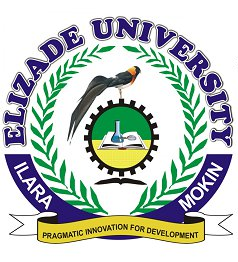Physics Keypoints: Electromagnetic Induction; This study material is suitable for students sitting for the following exams: JAMB, WAEC, NECO, GCE, IJMB, and JUPEB.
Read other physics keypoints here
Electromagnetic induction, a cornerstone of electromagnetism, holds immense importance in the fields of physics and engineering. It was discovered and extensively researched by Michael Faraday in the 19th century. In this article, we delve into the key aspects of electromagnetic induction, from Faraday’s laws to inductance and eddy currents, with an emphasis on providing students with a comprehensive understanding.
Physics Keypoints: Electromagnetic Induction
I. Faraday’s Laws of Electromagnetic Induction
(i) First Law of Electromagnetic Induction
Faraday’s first law, often regarded as the fundamental principle of electromagnetic induction, states that a change in magnetic field within a closed loop of wire leads to the generation of an electromotive force (emf) in the wire. In simpler terms, when the magnetic field passing through a coil of wire experiences a change, it triggers the generation of an electric current in the wire.
This crucial phenomenon underpins various electrical devices, from generators to transformers.
(ii) Factors Affecting Induced emf
Numerous factors influence the magnitude of the induced emf. These factors include the rate of change of magnetic flux, the number of turns in the coil, and the strength of the magnetic field. As per Faraday’s second law, the induced emf is directly proportional to the rate of change of magnetic flux.
II. Lenz’s Law and the Principle of Conservation of Energy
Lenz’s law acts in harmony with Faraday’s laws and introduces the concept of energy conservation into the realm of electromagnetic induction. Lenz’s law posits that the direction of the induced current is such that it opposes the change in magnetic flux that generated it.
This implies that energy is conserved in the process of electromagnetic induction, as the induced current resists the change in the magnetic field, ultimately slowing down the process.
III. A.C. and D.C. Generators
Alternating current (A.C.) and direct current (D.C.) generators exemplify the practical application of electromagnetic induction. A.C. generators produce an alternating current, where the direction of the current changes periodically, whereas D.C. generators yield a constant, unidirectional current. These generators are the lifeblood of our electrical power systems, providing energy for homes, industries, and a myriad of devices.
IV. Transformers
Mutual Inductance: Transformers operate on the principle of mutual inductance, where a changing current in the primary coil induces a changing magnetic field. This field, in turn, induces a voltage in the secondary coil. The ratio of the number of turns in the primary coil to the number of turns in the secondary coil, known as the turns ratio, determines the voltage transformation.
Efficiency and Applications: Transformers are highly efficient devices, with modern transformers reaching efficiencies of 95% or higher. They play a pivotal role in the electrical grid, facilitating the transmission of electricity from power plants to homes and businesses. They are also indispensable in power adapters for altering voltage levels to match the requirements of various electronic devices.
V. The Induction Coil
Applications Beyond Telecommunications: Although induction coils were initially developed for telecommunications, their applications have extended into various fields. They are crucial in spark-gap transmitters, historically employed in radio transmission. Additionally, induction coils are instrumental in igniting the spark plugs in gasoline engines.
Principle of Operation: Induction coils function on the basis of self-induction. When a direct current is interrupted, a collapsing magnetic field induces a high-voltage pulse in the secondary coil. This pulse creates a spark across a spark gap, a phenomenon harnessed for various applications, including ignition systems in early internal combustion engines.
(b) Inductance
Inductor Types: Inductors come in diverse forms, such as air-core inductors, iron-core inductors, and toroidal inductors. The choice of inductor depends on the specific application, with air-core inductors having low inductance and iron-core inductors possessing high inductance.
Self-Inductance: In addition to mutual inductance seen in transformers, inductors exhibit self-inductance. Self-inductance is a property where a changing current in an inductor induces an electromotive force within the same coil. Self-inductance is quantified by the inductance (L) and is measured in henrys (H).
(ix) Eddy Current
Use in Induction Heating: Eddy currents find practical application in induction heating processes. Induction heating leverages high-frequency alternating currents to generate eddy currents within conductive materials, resulting in rapid heating. This application is valuable in metal hardening, forging, and even in cooking appliances, such as induction stoves.
Eddy Current Brakes: Eddy currents are employed in contemporary transportation systems, particularly in the design of eddy current brakes. These brakes create magnetic fields that interact with nearby conductive materials, inducing eddy currents and generating a braking force. Eddy current brakes are often utilized in high-speed trains and roller coasters, owing to their precision and responsive braking capabilities.
By expanding on these topics, A-level students can gain a more comprehensive understanding of electromagnetic induction. It equips
them with in-depth knowledge of Faraday’s laws, Lenz’s law, generators, transformers, inductance, and the practical applications of eddy currents, thus enhancing their grasp of these fundamental principles in physics and electrical engineering.











